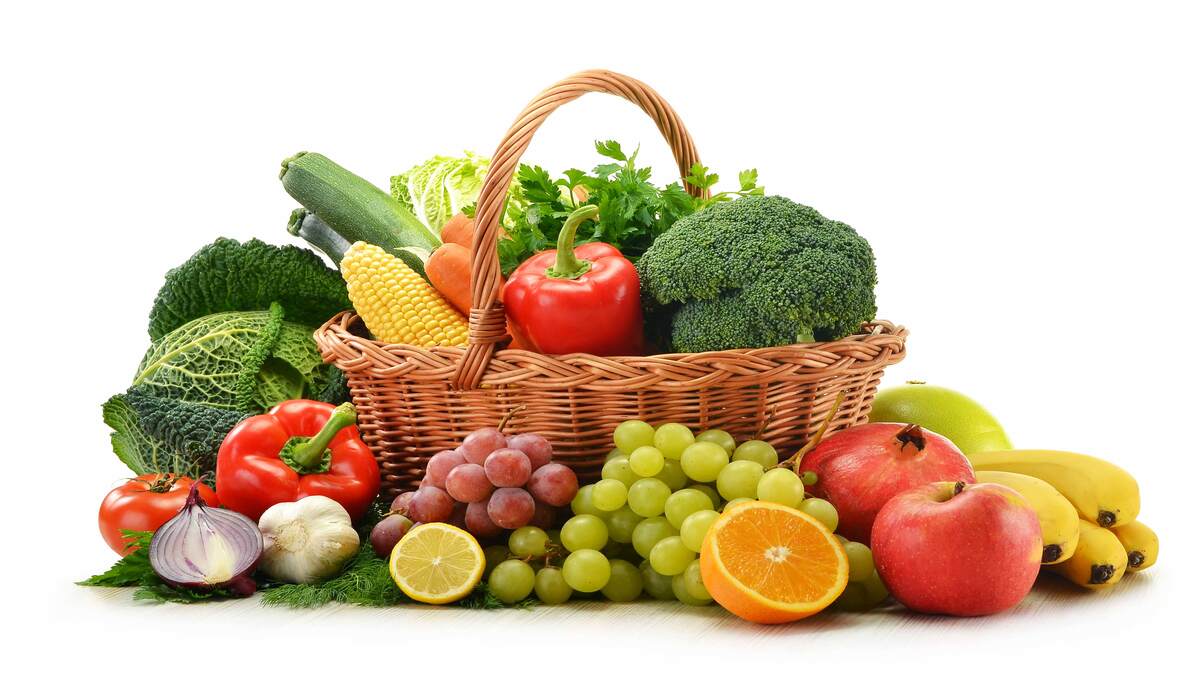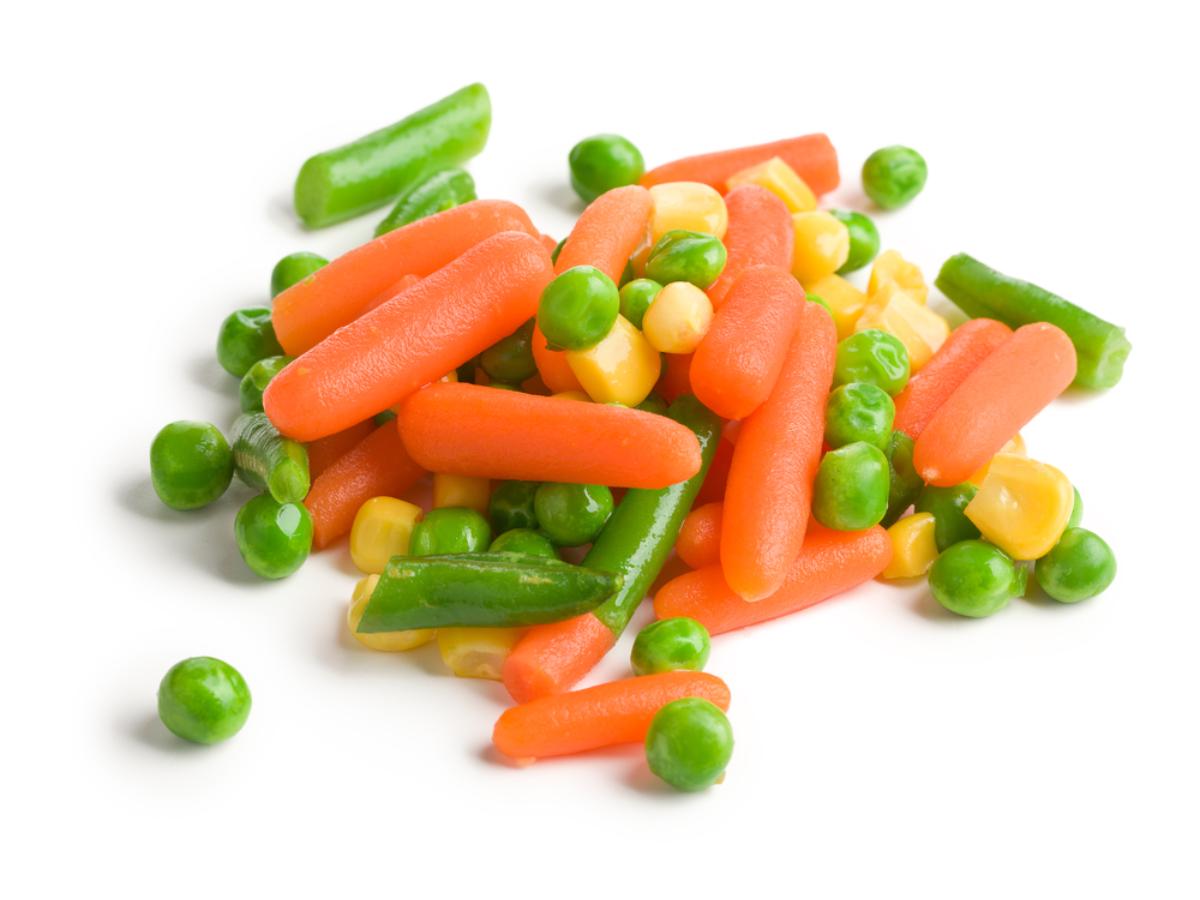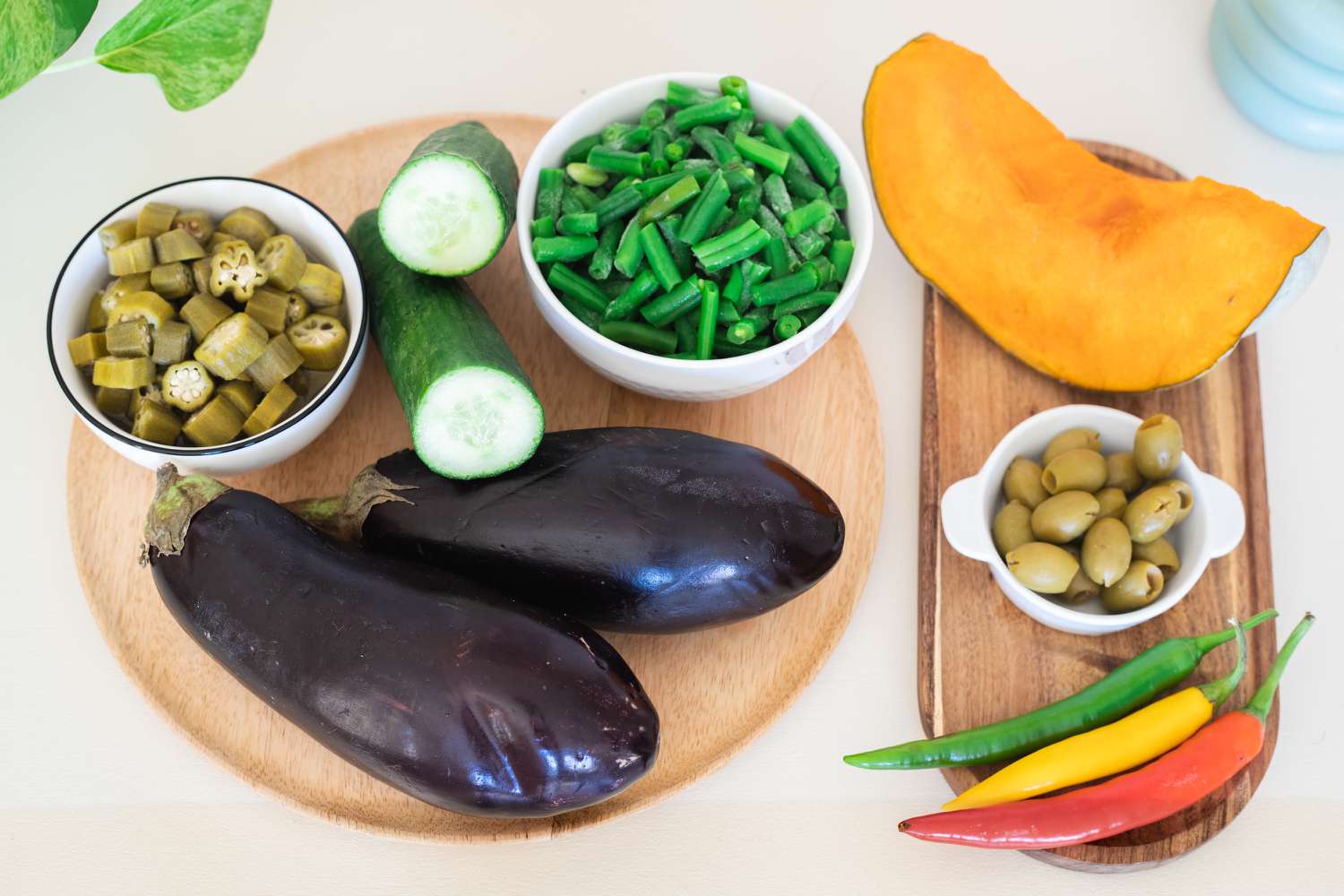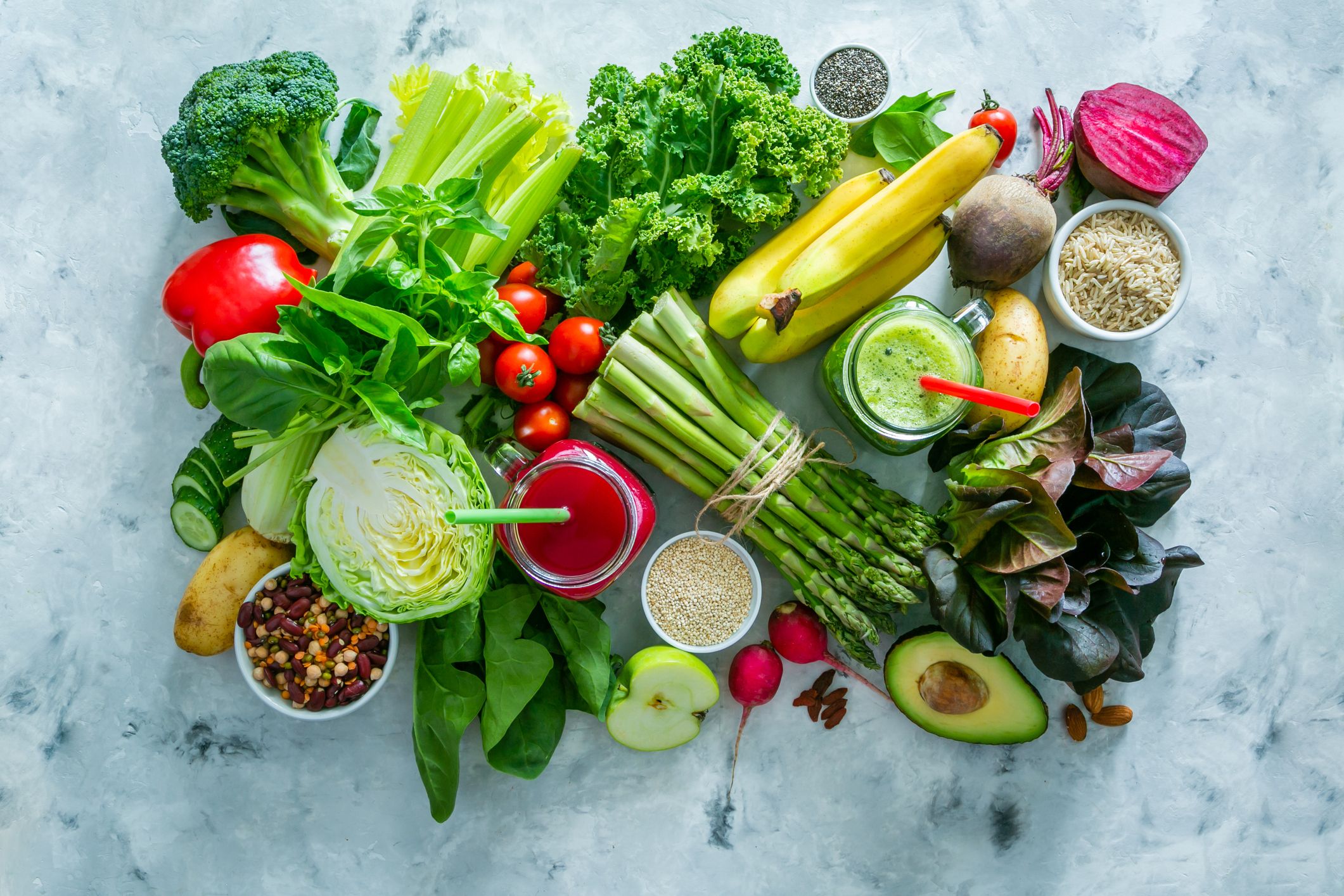Home>Gardening News and Trends>Latest News>How Many Servings Of Fruit And Vegetables Daily
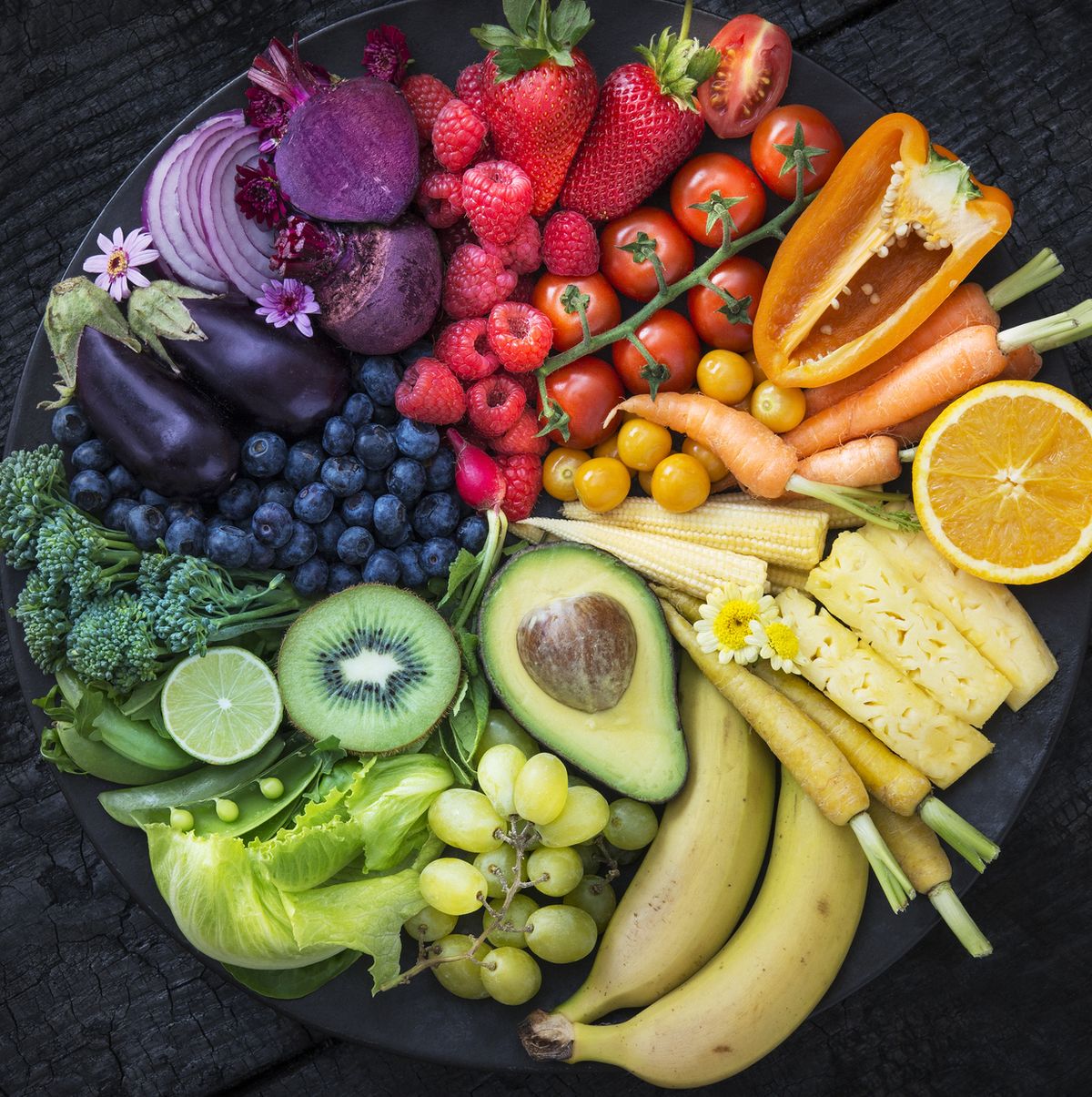

Latest News
How Many Servings Of Fruit And Vegetables Daily
Modified: January 22, 2024
Get the Latest News on How Many Servings of Fruit and Vegetables You Should Have Daily. Find out the Importance of a Balanced Diet and Stay Healthy.
(Many of the links in this article redirect to a specific reviewed product. Your purchase of these products through affiliate links helps to generate commission for Chicagolandgardening.com, at no extra cost. Learn more)
Table of Contents
- Importance of Consuming Fruit and Vegetables
- Recommended Daily Servings of Fruit and Vegetables
- Health Benefits of Eating Fruit and Vegetables
- Nutritional Value of Different Types of Fruits and Vegetables
- Easy Ways to Incorporate More Fruit and Vegetables into Your Diet
- Overcoming Barriers to Consuming Sufficient Fruit and Vegetables
- Tips for Properly Store and Prepare Fruits and Vegetables
- Common Mistakes to Avoid When Consuming Fruit and Vegetables
- Conclusion
Importance of Consuming Fruit and Vegetables
When it comes to maintaining a healthy diet, fruits and vegetables are indispensable. They are packed with essential vitamins, minerals, and fiber that are vital for our overall well-being. Consuming an adequate amount of fruits and vegetables on a daily basis provides numerous health benefits and helps prevent chronic diseases.
Fruits and vegetables are a rich source of vitamins, including vitamin C, vitamin A, and vitamin K, which are essential for a strong immune system, healthy skin, and proper blood clotting. They are also loaded with minerals such as potassium, which helps regulate blood pressure, and folate, which is important for cell growth and development.
The high fiber content in fruits and vegetables aids in digestion and promotes a healthy gut. Fiber also helps maintain a healthy weight by keeping us full for longer periods and preventing overeating. Additionally, the antioxidants found in fruits and vegetables protect our cells from damage and reduce the risk of chronic diseases like heart disease, cancer, and diabetes.
Eating a variety of fruits and vegetables ensures that we obtain a wide range of nutrients necessary for optimal health. Different types of fruits and vegetables possess unique combinations of vitamins, minerals, and phytochemicals, which have specific health benefits. For example, leafy greens like spinach and kale are rich in iron and calcium, while oranges and berries are high in vitamin C and antioxidants.
Incorporating fruits and vegetables into our diet can also help in weight management. They are low in calories and fat, making them ideal for those looking to shed excess pounds or maintain a healthy weight. They also provide a natural sweetness that can satisfy cravings for sugary snacks and desserts, reducing the consumption of empty calories.
Overall, consuming an appropriate amount of fruits and vegetables is crucial to nourishing our bodies. They play a vital role in supporting our immune system, maintaining proper bodily functions, and preventing chronic diseases. Adding a variety of colorful fruits and vegetables to our meals brings both nutritional benefits and delicious flavors. So make sure to include them in your daily diet to reap the incredible health benefits they offer.
Recommended Daily Servings of Fruit and Vegetables
Knowing the recommended daily servings of fruits and vegetables is essential for ensuring we meet our nutritional needs and maintain a healthy lifestyle. The exact number of servings varies depending on factors such as age, sex, and physical activity level. However, there are general guidelines that can serve as a starting point.
The U.S. Department of Agriculture (USDA) recommends consuming at least 2 cups of fruits and 2.5 cups of vegetables every day for adults on a 2,000-calorie diet. This guideline is based on the average daily requirements necessary for a healthy individual.
For fruits, one cup is equivalent to about one medium-sized apple, banana, or orange. It can also be approximately 8 strawberries or a half-cup of dried fruit. When it comes to vegetables, one cup could be one large red bell pepper, a large tomato, or two cups of leafy greens.
It is important to note that these recommendations are minimum guidelines, and it is even better to aim for more servings when possible. Different individuals may have different needs based on their age, activity level, and specific health conditions. For example, athletes or individuals with higher caloric needs may require additional servings to fuel their bodies.
When planning meals, it is advised to include a variety of fruits and vegetables from all color groups. This ensures that we benefit from the diverse array of nutrients offered by different produce. Each color group corresponds to different classes of phytochemicals, which have unique health-promoting properties.
For example, the red group includes fruits and vegetables like tomatoes, red peppers, and watermelon, which are rich in lycopene and anthocyanins. The blue/purple group includes blueberries, purple grapes, and eggplants, which contain anthocyanins and resveratrol. The green group encompasses leafy greens, broccoli, and kiwi, which are packed with chlorophyll and lutein.
It may seem challenging to incorporate the recommended daily servings into our diet, but with some planning and creativity, it can be easily achievable. Start by adding fruits and vegetables to your breakfast routine, such as blending them into a smoothie or topping your cereal with colorful berries. For lunch and dinner, incorporate a variety of vegetables in salads, stir-fries, soups, or as side dishes. Snack on fresh fruits or vegetable sticks with hummus throughout the day.
Remember to choose whole, unprocessed fruits and vegetables, as they provide the highest nutritional value. Canned fruits and vegetables can be an option, but ensure they are packed in water or their own juice rather than syrup. Frozen options are also convenient and retain a good amount of nutrients.
Incorporating the recommended daily servings of fruits and vegetables into our diet is a small but powerful step towards improving our overall health and well-being. By making these nutrient-rich foods a priority, we can enjoy the countless benefits they offer for our bodies and minds.
Health Benefits of Eating Fruit and Vegetables
Eating a diet rich in fruits and vegetables offers numerous health benefits that are essential for our overall well-being. These nutrient-packed foods provide a wide array of vitamins, minerals, antioxidants, and fiber that contribute to a healthy body and a reduced risk of chronic diseases.
One of the primary benefits of consuming fruits and vegetables is their role in supporting a strong immune system. They are packed with immune-boosting vitamins, such as vitamin C, which helps protect against common illnesses like the cold and flu. These foods also contain phytochemicals, which have been shown to have antimicrobial and anti-inflammatory properties, aiding in the body’s defense against infections and diseases.
Fruits and vegetables are rich in dietary fiber, which plays a crucial role in maintaining a healthy digestive system. Fiber helps prevent constipation, improves bowel regularity, and promotes a feeling of fullness, which can aid in weight management. Additionally, a high-fiber diet is associated with a lower risk of developing heart disease, stroke, and certain types of cancer, particularly colorectal cancer.
The antioxidants found in fruits and vegetables play a key role in protecting our cells from damage caused by harmful free radicals. Free radicals can contribute to inflammation, aging, and the development of chronic diseases. Antioxidants, such as vitamins C and E, help neutralize these free radicals, reducing the risk of oxidative stress and diseases like heart disease, cancer, and Alzheimer’s disease.
Consuming a diet rich in fruits and vegetables has also been linked to a reduced risk of cardiovascular diseases. The high levels of dietary fiber, potassium, and antioxidants present in these foods can help lower blood pressure, improve cholesterol levels, and reduce the risk of heart attacks and strokes. The natural compounds found in fruits and vegetables, such as flavonoids and polyphenols, have been found to have positive effects on blood vessel health and overall cardiovascular function.
In addition to their physical health benefits, fruits and vegetables are also beneficial for mental health. Studies have shown that individuals who consume more fruits and vegetables have a lower risk of depression and anxiety. The high levels of vitamins, minerals, and antioxidants present in these foods support healthy brain function and can boost mood and cognitive performance.
Overall, incorporating a variety of fruits and vegetables into our diet provides a multitude of health benefits. From bolstering the immune system and supporting digestion to reducing the risk of chronic diseases and promoting mental well-being, these nutrient-rich foods are essential for optimal health. So make sure to fill your plate with a colorful assortment of fruits and vegetables to reap the incredible benefits they offer.
Nutritional Value of Different Types of Fruits and Vegetables
Fruits and vegetables are not only delicious but also packed with essential nutrients that are vital for our overall health. Each type of fruit and vegetable offers its unique combination of vitamins, minerals, fiber, and antioxidants. Let’s explore the nutritional value of different types of fruits and vegetables.
Leafy greens like spinach, kale, and Swiss chard are low in calories but high in vitamins A, C, and K. They also contain minerals such as iron and calcium, which are important for maintaining bone health and preventing anemia.
Citrus fruits like oranges, grapefruits, and lemons are rich in vitamin C, which is known for its immune-boosting properties. They also provide potassium, fiber, and a variety of antioxidants, including flavonoids and limonoids.
Berries, such as blueberries, strawberries, and raspberries, are packed with antioxidants, including anthocyanins and ellagic acid. These antioxidants help protect against cellular damage and reduce the risk of chronic diseases like cancer and heart disease. Berries are also a good source of dietary fiber.
Tomatoes are not only delicious but also rich in vitamins A and C and the antioxidant lycopene. Lycopene has been associated with a reduced risk of prostate cancer and heart disease. Tomatoes are also a good source of potassium and fiber.
The cruciferous vegetable family, which includes broccoli, cauliflower, and Brussels sprouts, is known for its high levels of vitamins C and K. These vegetables also provide folate, fiber, and a variety of phytochemicals that have been linked to a lower risk of cancer.
Root vegetables like carrots and sweet potatoes are rich in beta-carotene, which is converted into vitamin A in the body. These vegetables are also a good source of fiber, potassium, and vitamin C.
Tropical fruits like bananas, pineapples, and mangoes are not only delicious but also offer a variety of nutrients. Bananas are a good source of potassium and provide vitamins C and B6. Pineapples are rich in vitamin C and contain an enzyme called bromelain, which aids in digestion. Mangoes offer vitamins A and C, as well as fiber.
In addition to these examples, there are many other types of fruits and vegetables available, each with their own nutritional profile. By incorporating a variety of fruits and vegetables into our diet, we can ensure we obtain a wide range of essential nutrients necessary for optimal health.
Remember that when consuming fruits and vegetables, it is important to choose fresh, whole options whenever possible. This ensures that we receive the maximum nutritional benefits. Incorporate different types of fruits and vegetables into your meals and snacks to add variety and maximize your nutrient intake.
Whether you prefer leafy greens, citrus fruits, berries, or other types of produce, each fruit and vegetable contributes to a well-rounded and nutritious diet. So make it a point to include a colorful assortment of fruits and vegetables in your daily meals for a healthy body and mind.
Easy Ways to Incorporate More Fruit and Vegetables into Your Diet
Incorporating more fruits and vegetables into your daily diet doesn’t have to be a daunting task. With a bit of planning and creativity, you can easily increase your intake of these nutritious foods. Here are some easy ways to incorporate more fruits and vegetables into your diet:
- Start your day with a fruit or vegetable: Add sliced bananas, berries, or chopped fruits to your cereal, yogurt, or oatmeal. You can also blend fruits like spinach or kale into your morning smoothies for an extra nutritional boost.
- Have a colorful salad: Start your lunch or dinner with a vibrant salad filled with a variety of fresh vegetables. Add leafy greens like spinach or romaine lettuce, cherry tomatoes, cucumbers, carrots, and bell peppers. Experiment with different salad dressings and toppings to keep it interesting.
- Snack on fruits and vegetables: Keep a bowl of fresh fruits on your kitchen counter or pack sliced vegetables like carrots, bell peppers, or cucumber with a side of hummus for a nutritious snack. Replace unhealthy snack options with these wholesome choices.
- Add vegetables to your main dishes: Incorporate vegetables into your main meals by adding them to stir-fries, pasta dishes, casseroles, and soups. Mix in vegetables like broccoli, zucchini, mushrooms, or peas to boost the nutritional value of your meals.
- Make fruit-infused water: Enhance the flavor of your water by adding slices of fruits like lemon, lime, or berries. This adds a refreshing twist and encourages you to drink more water throughout the day.
- Experiment with vegetable-based substitutes: Replace higher-calorie ingredients with vegetable alternatives. For example, use zucchini or cauliflower to make “zoodles” or “cauliflower rice” instead of regular pasta or rice. This allows you to enjoy your favorite dishes while increasing your vegetable intake.
- Blend vegetables into sauces and soups: Sneak in extra vegetables by blending them into your sauces and soups. Puree vegetables like carrots, sweet potatoes, or cauliflower and mix them into pasta sauces or soups to add nutrition without compromising flavor.
- Try new recipes: Explore new recipes that feature fruits and vegetables as the main ingredients. Look for dishes like vegetable stir-fries, fruit salads, roasted vegetable medleys, or fruit-based desserts to add variety and excitement to your meals.
- Buy frozen or canned options: If fresh produce is not always available, stock your freezer with frozen fruits and vegetables or opt for canned options. These can be just as nutritious and convenient to have on hand for quick and easy meal preparation.
Incorporating more fruits and vegetables into your diet doesn’t have to be complicated. By following these simple tips, you can easily increase your intake of these nutrient-packed foods. Remember, the key is to make fruits and vegetables a regular part of your daily meals and snacks, providing your body with the essential nutrients it needs for optimal health.
Overcoming Barriers to Consuming Sufficient Fruit and Vegetables
While we all know the importance of consuming sufficient fruits and vegetables, there can be various barriers that hinder our ability to incorporate them into our diet. By identifying and overcoming these barriers, we can ensure that we are getting the nutritional benefits of these essential food groups. Here are some common barriers and strategies to overcome them:
- Lack of accessibility: Limited access to fresh fruits and vegetables can be a significant barrier. In such cases, consider exploring local farmers’ markets or community-supported agriculture (CSA) programs for a wider variety of fresh produce. Additionally, frozen fruits and vegetables can be a convenient and nutritious alternative.
- Time constraints: Busy schedules can make it challenging to prepare and consume fruits and vegetables. Meal planning and prepping can be helpful in incorporating them. Set aside time each week to wash, chop, and store fruits and vegetables for easy access. Consider using convenience options like pre-cut veggies or salad kits to save time.
- Limited cooking skills: Lack of cooking skills can make it difficult to include fruits and vegetables in meals. Start with simple recipes that require minimal cooking, such as salads, smoothies, or fruit bowls. Look for online resources or cooking classes that can help you improve your culinary skills.
- Preference for other foods: If you have a preference for other foods over fruits and vegetables, it can be challenging to make the switch. Start by gradually incorporating fruits and vegetables into your favorite dishes, blending them into smoothies, or experimenting with new recipes to discover new flavors and textures.
- Cost considerations: Budget constraints may limit access to a wide variety of fruits and vegetables. Choose seasonal options, buy in bulk, or visit local farmers’ markets for affordable produce. Canned or frozen fruits and vegetables can also be cost-effective alternatives with good nutritional value.
- Family or cultural preferences: Family or cultural preferences can influence our food choices. Involve your family members in meal planning and cooking, and try to incorporate fruits and vegetables into traditional dishes. Experiment with different cooking methods, spices, and flavors to make fruits and vegetables more appealing and enjoyable.
- Lack of knowledge about preparation: Not knowing how to prepare or cook fruits and vegetables can be a barrier. Explore various cooking methods like steaming, roasting, grilling, or sautéing to enhance their flavors. Look for online tutorials or cookbooks that offer simple and healthy recipes.
- Unrealistic expectations: Setting unrealistic expectations can discourage consistent intake of fruits and vegetables. Start by setting small, achievable goals to gradually increase your consumption. Focus on progress rather than perfection, and reward yourself for making positive changes.
By addressing these barriers and implementing strategies to overcome them, you can improve your ability to consume sufficient fruits and vegetables. Remember, making small changes and finding what works best for you is key to long-term success. With persistence and creativity, you can overcome these barriers and enjoy the many health benefits that fruits and vegetables offer.
Tips for Properly Store and Prepare Fruits and Vegetables
Properly storing and preparing fruits and vegetables is essential for maintaining their freshness, flavor, and nutritional value. Here are some helpful tips to ensure you get the most out of your produce:
- Wash fruits and vegetables before consumption: Rinse fresh produce with clean water to remove dirt, bacteria, and any residues. Use a vegetable brush for firm produce with a harder surface, like potatoes or cucumbers.
- Store fruits and vegetables separately: Some fruits, like apples and bananas, release a gas called ethylene that can speed up the ripening process of other produce. To prevent premature spoilage, store fruits and vegetables in separate areas or containers.
- Keep fruits and vegetables in the refrigerator: Most fruits and vegetables benefit from being stored in the refrigerator, as it helps maintain their freshness. However, some fruits, such as bananas, avocados, and tomatoes, should be kept at room temperature to ripen properly.
- Store cut fruits and vegetables properly: Once you’ve cut fruits and vegetables, store them in airtight containers or resealable bags in the refrigerator to maintain their freshness. To prevent browning, squeeze lemon juice or use a specialized produce saver, such as ascorbic acid, on cut fruits like apples or avocados.
- Prepare fruits and vegetables in advance: Washing, cutting, and preparing fruits and vegetables in advance can save time and make healthy eating more convenient. However, some fruits and vegetables, like apples and pears, may oxidize and brown when they’re cut. To prevent this, squeeze lemon juice or immerse them in a solution of water and lemon juice before storing.
- Opt for whole fruits and vegetables: Whole fruits and vegetables tend to retain more nutrients compared to pre-cut or pre-packaged options. Whenever possible, choose whole produce and prepare them at home instead of relying on convenience products.
- Be mindful of cooking methods: Different cooking methods can affect the nutritional quality of fruits and vegetables. Steaming, roasting, or stir-frying are great cooking methods that help retain the nutrients in the produce. Avoid overcooking, as it can lead to nutrient loss.
- Try new preparation methods: Get creative with your fruit and vegetable preparation to keep things interesting. Experiment with different flavors by grilling vegetables, making fruit-infused water, or trying new recipes that incorporate raw or lightly cooked produce.
- Avoid excessive soaking: Soaking fruits and vegetables for extended periods can cause nutrient loss. Instead, wash and rinse them quickly under running water to remove any contaminants.
- Compost food scraps: Reduce waste by composting fruit and vegetable scraps, such as peels, cores, and stems. Composting not only reduces landfill waste but also creates nutrient-rich soil for your own garden or potted plants.
Properly storing and preparing fruits and vegetables not only helps maintain their freshness but also preserves their nutritional value. By following these tips, you can ensure you’re getting the most out of your produce and enjoying the full benefits of these nutritious foods.
Common Mistakes to Avoid When Consuming Fruit and Vegetables
While incorporating fruits and vegetables into our diet is essential for our overall health, there are some common mistakes that people make when consuming them. Being aware of these mistakes can help ensure that you are getting the maximum nutritional benefits from these nutritious foods. Here are some common mistakes to avoid:
- Not consuming a variety of fruits and vegetables: It’s important to consume a wide range of fruits and vegetables to benefit from their diverse nutrients. Eating the same fruits and vegetables every day may lead to nutrient deficiencies. Aim for a colorful assortment of produce to ensure you are getting a variety of vitamins, minerals, and antioxidants.
- Excessive peeling: Many of the nutrients in fruits and vegetables are concentrated in or near their peel or skin. Avoid peeling fruits and vegetables whenever possible, or opt for a light scrub to remove dirt and bacteria. Just be sure to wash them thoroughly before consuming.
- Overcooking: Overcooking fruits and vegetables can lead to nutrient loss. Cook them lightly or choose cooking methods such as steaming or stir-frying that retain their nutritional value. Avoid boiling vegetables for too long, as this can cause water-soluble vitamins to leach out.
- Not consuming enough fiber: Fruits and vegetables are excellent sources of dietary fiber, which is important for digestive health and maintaining a healthy weight. Ensure you are consuming the whole fruit or vegetable, including the skin or peel, as that’s where most of the fiber is located.
- Reliance on juices and smoothies: While juices and smoothies can be a convenient way to consume fruits and vegetables, they may lack the fiber found in whole fruits and vegetables. If consuming juices or smoothies, try to include some fiber-rich ingredients such as fruits with edible skin or add a scoop of oats or flaxseed for added fiber.
- Overconsumption of dried fruits: Dried fruits can be a nutritious snack, but they are concentrated sources of natural sugars. Be mindful of portion sizes and consider pairing them with a source of protein or healthy fats to mitigate the blood sugar impact.
- Not considering portion sizes: While fruits and vegetables are nutritious, it’s important to be mindful of portion sizes. Overeating even healthy foods can contribute to weight gain. Pay attention to recommended serving sizes and try to incorporate a variety of fruits and vegetables throughout the day.
- Ignoring organic options: While choosing organic produce isn’t necessary for everyone, some fruits and vegetables tend to have higher levels of pesticide residues. Consider buying organic for produce that is commonly treated with pesticides, such as strawberries, apples, and spinach.
- Not incorporating fruits and vegetables in every meal: To optimize your nutrient intake, aim to include fruits and vegetables with every meal. Whether it’s adding berries to your morning cereal, including a side salad with lunch, or incorporating vegetables into your dinner, make fruits and vegetables a regular part of your daily meals.
- Skipping fruits and vegetables altogether: The most common mistake is simply not consuming enough fruits and vegetables. Aim to meet the recommended daily servings and make it a priority to incorporate them into your diet for their incredible health benefits.
Avoiding these common mistakes will help ensure that you are getting the most out of your fruits and vegetables. By incorporating a variety of produce, being mindful of portion sizes, and consuming them in their whole form, you can maximize the nutritional benefits and enjoy a healthier diet and lifestyle.
Conclusion
Fruits and vegetables are not only delicious and colorful but also crucial for our overall health and well-being. These nutrient-packed foods provide us with essential vitamins, minerals, fiber, and antioxidants that support a strong immune system, digestive health, and help reduce the risk of chronic diseases.
Incorporating more fruits and vegetables into our diet can seem challenging at first, but with some planning and creativity, it becomes an achievable goal. Start by aiming for the recommended daily servings of fruits and vegetables, and gradually increase your intake as you discover new flavors and recipes.
Remember to choose a variety of fruits and vegetables to ensure you receive a wide range of nutrients. Experiment with different cooking methods and preparations to keep meals interesting and enjoyable. Avoid common mistakes such as overcooking, excessive peeling, or relying solely on juices or smoothies.
By properly storing and preparing fruits and vegetables, you can extend their shelf life and preserve their nutritional value. Wash them thoroughly, store them appropriately, and be mindful of portion sizes to optimize nutrient intake.
Overcoming barriers such as limited accessibility, lack of cooking skills, or cost concerns can be achieved by planning, seeking out different options, and involving the whole family in the process. With persistence and creativity, you can make fruits and vegetables a regular part of your daily meals and snacks.
Incorporating more fruits and vegetables into your diet is a small but powerful step towards improving your overall health and well-being. By making them a priority, you can enjoy the countless benefits they offer. So make it a point to fill your plate with a colorful assortment of fruits and vegetables and savor the journey towards a healthier lifestyle.
